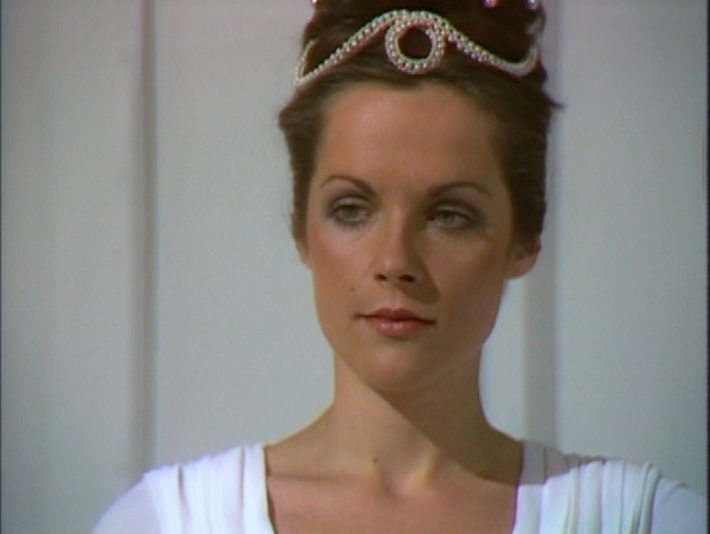My hat’s on fire.
Up to now, the stories in Season Sixteen’s Key to Time arc have focused, to at least some extent, on said Key. The various Key segments, because of their ability to assume mundane (and fantastic) forms, drive the action, with the Fourth Doctor and Romana spending their efforts in hot pursuit of the disguised perspex chunks. But by the fourth of the six stories in the arc, David Fisher’s “The Androids of Tara” (Story Production Code 5D), the writer and production team seem to have just given up trying to integrate the MacGuffin into the narrative on offer. Here, Romana finds the fourth segment of the Key to Time within the opening eight minutes of the first of four episodes, has it promptly taken away (as she herself is captured), and then, once the plot du jour comes to a close, she and the Doctor remember to grab it before leaving as the briefest of afterthoughts. For a device that can stop time and destroy the universe, the Key to Time doesn’t get much respect.

“The Androids of Tara” does not suffer from the Key’s tentative linkage to the story, however. As often happens when Doctor Who leans into historical pieces that can draw on the BBC’s extensive costume wardrobe and Britain’s equally impressive collection of castles, the sumptuousness of the proceedings papers over many plot problems. Sadly, the title spoils the core surprise here, as on first glance, the Fourth Doctor and Romana have landed in the Middle Ages of the storybooks, with chivalric knights, bridled chargers, majestic moats, and overzealous retainers quick with a rapier. Only when the Doctor’s hat is zapped by an electric sword, and when Romana is mistaken for an android and nearly disassembled, do we realize that Tara is no ordinary Medieval society.

Interestingly, this juxtaposition of the traditional side-by-side with the futuristic has not featured prominently in the series to date. We’ve seen fallen cultures that cling to past technology as talismans (“The Face of Evil,” “Underworld“) and technology improperly transported into archaic settings (“The Time Meddler,” “The Time Warrior,” “The Ribos Operation“), but other than the Peladon stories, this seamless blending of horses and robots, of peasants and laser crossbows, represents relatively new and fertile ground for Doctor Who. David Fisher, writing his second story in a row, fails to do much with the conceit, alas, using androids as a simple means of introducing doppelgängers for several characters in this reworking of Anthony Hope’s tale of courtly intrigue, The Prisoner of Zenda.

Trite does not equal boring, however, and Fisher, with director Michael Hayes, gives both the regulars and the guest stars plenty of scenery to chew. Of note, Peter Jeffrey, playing the villainous Count Grendel, proves the most slippery and supercilious foe the Doctor has encountered since Roger Delgado’s Master, given to vainglorious proclamation and skillful swordsmanship in equal measure. Tom Baker in particular plays off of Jeffrey with ease, and their repartee, aided by Fisher’s deft touch with the bon mots, yields an enjoyable, if somewhat unmemorable, story. Well, not that anyone could ever forget one of the most horrific moments in series history: the Fourth Doctor’s scarf being burned…



















